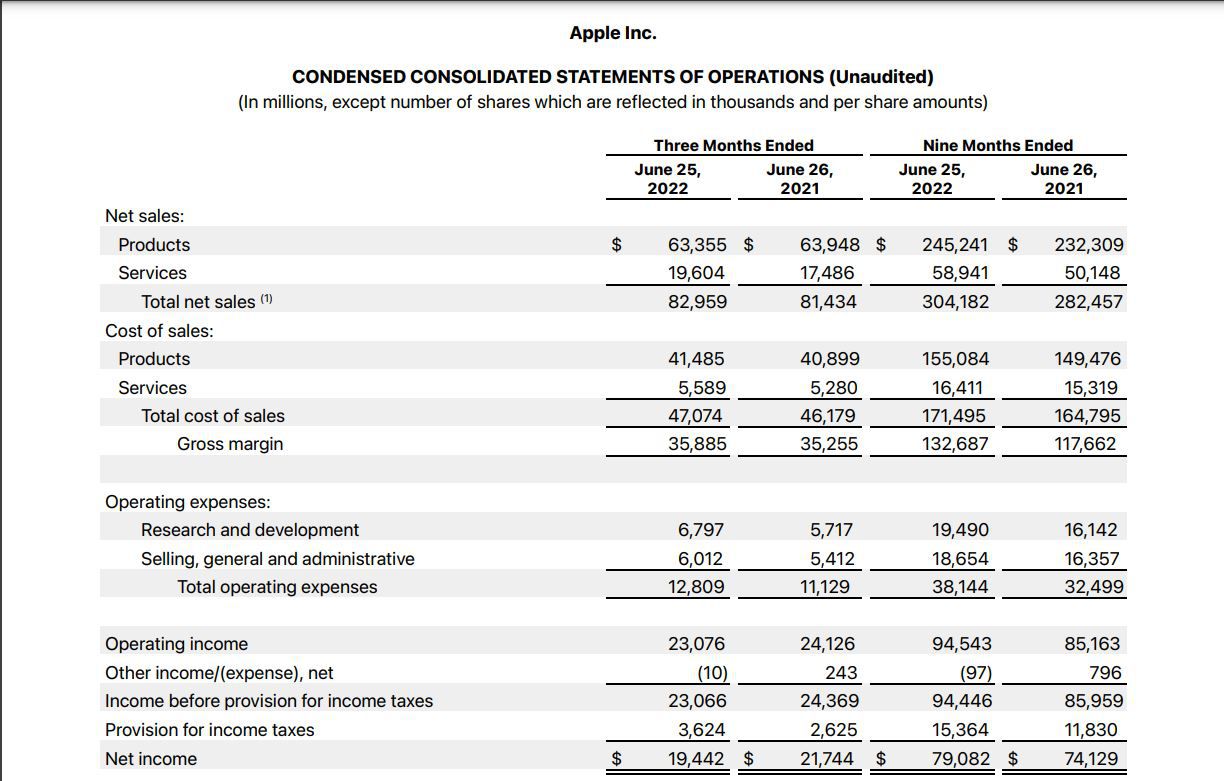

Finance
How To Calculate Tax Savings
Published: January 16, 2024
Learn how to calculate tax savings and maximize your finance with practical tips and strategies. Discover effective methods to save money and reduce your tax burden.
(Many of the links in this article redirect to a specific reviewed product. Your purchase of these products through affiliate links helps to generate commission for LiveWell, at no extra cost. Learn more)
Table of Contents
Introduction
Welcome to our comprehensive guide on how to calculate tax savings. Taxes can often be a confusing and daunting aspect of personal finance. However, taking the time to understand and calculate your tax savings can have significant benefits for your financial future. By correctly identifying the tax deductions and credits that you qualify for, you can save money and keep more of your hard-earned income in your pocket.
Understanding the intricacies of tax savings is crucial for anyone looking to make informed financial decisions. Whether you are a first-time taxpayer or a seasoned veteran, this guide will provide you with the knowledge and tools to calculate your tax savings accurately. We will explore the importance of calculating tax savings and the factors that can affect them. Furthermore, we will provide a step-by-step guide to help you navigate through the calculation process, along with an example to illustrate the concept.
It is important to note that tax laws and regulations can vary between jurisdictions, so it is always advisable to consult with a professional tax advisor or accountant to ensure you are in compliance with local tax laws. However, having a solid understanding of how to calculate tax savings will enable you to have more meaningful and productive conversations with tax professionals, ultimately helping you make informed decisions about your finances.
Whether you are looking to optimize your tax savings for retirement planning, investment decisions, or simply to minimize your tax burden, this guide will equip you with the necessary knowledge to take control of your tax situation. So, let’s dive in and unlock the secrets of calculating tax savings to help you achieve your financial goals!
Understanding Tax Savings
Tax savings refer to the reduction in the amount of taxes owed to the government. It is the difference between the taxes you would have had to pay and the taxes you actually pay after taking advantage of various deductions, credits, exemptions, and other tax-saving strategies. By understanding how tax savings work, you can make strategic financial decisions that will minimize your tax liability.
There are different types of tax savings that individuals and businesses can take advantage of:
- Tax deductions: These are expenses or deductions allowed by the tax code that can reduce your taxable income. Common deductions include mortgage interest, property taxes, student loan interest, medical expenses, and charitable contributions. By deducting these expenses from your income, you effectively lower the amount of income that is subject to tax.
- Tax credits: Unlike deductions, which reduce your taxable income, tax credits directly reduce the amount of tax you owe. Common tax credits include the child tax credit, earned income tax credit, and education-related credits. Tax credits are especially valuable as they provide a dollar-for-dollar reduction in your tax liability.
- Tax exemptions: Exemptions are a specific amount of income that is excluded from taxation. In some tax systems, individuals may be entitled to exemptions for themselves, their spouse, and their dependents.
- Tax planning strategies: Effective tax planning can also contribute to tax savings. This involves carefully organizing your financial affairs to minimize your tax liability, such as timing capital gains and losses, utilizing retirement accounts, and maximizing deductions.
Understanding tax savings is essential because it allows you to make informed financial decisions that can directly impact your bottom line. By taking advantage of tax deductions, credits, exemptions, and effective tax planning, you can optimize your tax situation and keep more money in your pocket.
It is important to note that tax laws and regulations can be complex and subject to change. Therefore, it is advisable to consult with a tax professional or utilize tax software to ensure you are accurately calculating your tax savings and taking full advantage of all available tax-saving opportunities.
In the next section, we will explore the importance of calculating tax savings and how it can positively impact your overall financial well-being.
Importance of Calculating Tax Savings
Calculating tax savings is a crucial step in managing your personal finances and maximizing your overall financial well-being. Here are some key reasons why understanding and calculating tax savings is important:
- Maximize your income: By taking advantage of tax deductions, credits, and exemptions, you can effectively reduce the amount of taxable income. This means that you get to keep more of your hard-earned money, increasing your overall income and financial stability.
- Optimize budgeting and financial planning: By accurately calculating your tax savings, you can better plan and allocate your financial resources. Knowing how much you save in taxes allows you to make informed decisions about savings, investments, debt management, and other financial goals.
- Identify areas for improvement: Calculation of tax savings provides an opportunity to evaluate your financial situation from a tax perspective. It allows you to identify areas where you can potentially increase your tax savings by making adjustments to your finances, such as increasing contributions to retirement accounts or taking advantage of tax-advantaged investments.
- Stay in compliance with tax laws: Calculating tax savings helps ensure that you are accurately reporting your income and taking advantage of all eligible deductions and credits. This keeps you in compliance with tax laws, reducing the risk of penalties or audits from tax authorities.
- Plan for the future: By calculating tax savings, you can make strategic financial decisions that align with your long-term goals. This can include planning for retirement, saving for education expenses, or implementing tax-efficient estate planning strategies.
Additionally, understanding and calculating tax savings can empower you to be more proactive in your financial management. By staying informed about potential tax-saving opportunities, you can work with tax professionals to explore new strategies and ensure you are taking full advantage of all available deductions and credits.
Remember, tax laws and regulations can change over time, so it is important to stay up-to-date on the latest updates and consult with a knowledgeable tax advisor. By calculating your tax savings accurately, you can achieve a greater level of financial freedom and make more informed decisions about your money.
In the next section, we will explore the various factors that can influence your tax savings.
Factors Affecting Tax Savings
Several factors can impact the amount of tax savings you can achieve. Understanding these factors is essential for accurately calculating your tax savings and making informed financial decisions. Here are some key factors that can affect your tax savings:
- Income level: Your income level plays a significant role in determining your tax savings. Tax systems often apply different tax rates to different income brackets, with higher income levels typically subject to higher tax rates. Lower-income individuals may qualify for tax credits and deductions specifically designed to reduce their tax burden.
- Tax deductions and credits: The specific deductions and credits you qualify for will have a direct impact on your tax savings. It’s essential to understand the eligibility criteria and requirements for each deduction and credit to maximize your tax savings. Common deductions include expenses related to homeownership, education, medical expenses, and charitable contributions. Tax credits, such as those for education, childcare, or renewable energy, can also significantly reduce your tax liability.
- Filing status: Your filing status, such as single, married filing jointly, married filing separately, or head of household, can affect your tax savings. Some filing statuses may offer more advantageous tax rates or higher deduction limits, leading to greater tax savings.
- Dependents: Having dependents can impact your tax savings by increasing the number of allowances and credits available to you. Child tax credits, child and dependent care credits, and education-related deductions are just a few examples of tax benefits that can help reduce your tax liability when you have dependents.
- Tax laws and regulations: Tax laws and regulations are subject to changes that can affect your tax savings. New legislation, amendments, or expiration of certain tax provisions may impact the deductions, credits, or exemptions available to you. It is crucial to stay informed about any updates in tax laws and regulations to maximize your tax savings.
- Timing of income and expenses: The timing of your income and expenses can impact your tax savings. Accelerating deductions into the current tax year or deferring income to future years can help reduce your taxable income and increase your tax savings. This strategy is particularly relevant for self-employed individuals or business owners who have more flexibility in timing their income and expense transactions.
Understanding these factors and how they interact with your specific financial situation is key to optimizing your tax savings. It is recommended to consult with a tax professional or utilize tax software to ensure you are considering all relevant factors and taking full advantage of available tax-saving opportunities.
Next, we will provide you with a step-by-step guide on how to calculate your tax savings accurately.
Step-by-step Guide to Calculate Tax Savings
Calculating tax savings requires attention to detail and a systematic approach. Here is a step-by-step guide to help you accurately calculate your tax savings:
- Gather your financial documents: Start by gathering all the necessary financial documents, including your W-2 or 1099 forms, investment statements, receipts for deductible expenses, and any other relevant tax-related documents.
- Understand your tax deductions and credits: Familiarize yourself with the tax deductions and credits available to you. This includes deductions such as mortgage interest, student loan interest, medical expenses, and credits like the child tax credit or education-related credits. Ensure that you meet the eligibility criteria for each deduction and credit.
- Calculate your taxable income: Begin by calculating your taxable income. This involves adding up all sources of income, including wages, interest, dividends, and rental income. Then, subtract any deductions, such as contributions to retirement accounts or health savings accounts, to arrive at your taxable income.
- Apply tax deductions: Deduct any eligible expenses from your taxable income. This includes deductions like mortgage interest, property taxes, state and local taxes, and qualified business expenses. Be sure to have proper documentation to support each deduction.
- Claim tax credits: Determine if you qualify for any tax credits and apply them to your tax liability. Examples of tax credits include the child tax credit, earned income tax credit, or energy-efficient home credits. Tax credits have a direct impact on reducing your tax liability dollar-for-dollar.
- Consider tax planning strategies: Explore tax planning strategies that can further optimize your tax savings. This could involve deferring income to future years, maximizing contributions to retirement accounts, or coordinating capital gains and losses. Consulting with a tax professional can help identify the most suitable tax planning strategies for your situation.
- Review and file your tax return: Once you have completed all the necessary calculations, review your tax return for accuracy. Double-check that you have applied all eligible deductions and credits correctly. If satisfied, file your tax return electronically or by mail, ensuring it is submitted before the deadline.
It is important to remember that tax calculations can be complex, especially if you have multiple sources of income or significant deductions. If you are unsure about any aspect of calculating your tax savings, consider consulting with a tax professional or utilizing tax software to ensure accuracy and maximize your tax savings.
To further illustrate the process, let’s take a look at an example calculation of tax savings in the next section.
Example Calculation of Tax Savings
To better understand how tax savings are calculated, let’s walk through an example. Please note that this is a simplified scenario and may not reflect your specific circumstances. We’ll consider the following details:
- Single individual with a taxable income of $50,000
- Eligible for tax deductions of $5,000
- Qualifies for a tax credit of $1,000
- Tax rate of 20%
To calculate the tax savings, follow these steps:
- Calculate taxable income: Subtract the tax deductions ($5,000) from the gross income ($50,000) to determine the taxable income. In this example, the taxable income would be $45,000.
- Calculate the tax liability: Apply the tax rate (20%) to the taxable income. In this case, the tax liability would be $9,000 (20% of $45,000).
- Apply tax credits: Subtract the tax credit ($1,000) from the tax liability to determine the final tax owed. In this example, the tax owed after applying the tax credit would be $8,000 ($9,000 – $1,000).
Therefore, in this hypothetical scenario, the tax savings would be $1,000 ($9,000 – $8,000).
This example illustrates how tax deductions and credits can significantly reduce your tax liability. By reducing your taxable income through deductions and applying credits, you can save money and optimize your tax savings.
Keep in mind that tax calculations can be more complex when additional factors come into play, such as different filing statuses, multiple sources of income, or additional deductions and credits. Consult with a tax professional or utilize tax software to ensure you accurately calculate your tax savings based on your unique circumstances.
Now that you have an example calculation, let’s move on to the next section where we will discuss common mistakes to avoid when calculating tax savings.
Common Mistakes to Avoid
Calculating tax savings can be a complex process, and it’s important to be aware of common mistakes that taxpayers often make. By avoiding these mistakes, you can ensure the accuracy of your tax calculations and maximize your tax savings. Here are some common mistakes to watch out for:
- Failing to keep thorough records: Accurate record-keeping is essential for claiming deductions and credits. Keep organized records of all income, expenses, and supporting documents to substantiate your claims. Without proper documentation, you may miss out on valuable deductions and credits.
- Overlooking eligible deductions and credits: Tax laws and regulations are constantly changing, and it’s important to stay informed about available deductions and credits. Research and understand the eligibility criteria for each deduction and credit to ensure you take full advantage of the tax-saving opportunities available to you.
- Incorrectly calculating taxable income: Determine your taxable income accurately by accounting for all sources of income and applying the relevant deductions. Failure to include certain sources of income or miscalculating deductions can result in underreporting or overreporting your income, leading to potential penalties or missed tax savings.
- Missing filing deadlines: Filing your tax return late can result in penalties and interest charges. Mark important tax deadlines on your calendar and make sure to submit your return on time to avoid unnecessary fees.
- Forgetting to review your tax return: Before submitting your tax return, take the time to review all the information for accuracy. Double-check calculations, verify personal details, and ensure that you have claimed all eligible deductions and credits. A thorough review can help catch any errors or omissions that could affect your tax savings.
- Not seeking professional help when needed: Tax preparation can be complex, especially if you have intricate financial situations or if you own a business. Don’t hesitate to seek professional assistance from a qualified tax advisor or accountant to ensure your tax calculations are accurate and optimize your tax savings.
By avoiding these common mistakes, you can ensure a smoother and more accurate tax calculation process, ultimately maximizing your tax savings. Taking the time to educate yourself, staying organized, and seeking professional assistance when necessary will help you navigate the complexities of the tax system more effectively.
Next, we will provide you with some tips for maximizing your tax savings.
Tips for Maximizing Tax Savings
When it comes to maximizing your tax savings, it’s important to take a proactive approach and implement effective strategies. Here are some valuable tips to help you maximize your tax savings:
- Stay up-to-date on tax laws: Keep yourself informed about the latest tax laws and regulations. Stay updated with any changes that could impact your tax situation, new deductions or credits that become available, or changes in filing requirements. This will help you identify new opportunities for tax savings.
- Take advantage of tax deductions: Familiarize yourself with the tax deductions available to you and ensure that you maximize their use. Deductible expenses can include mortgage interest, property taxes, state and local taxes, medical expenses, education-related expenses, and contributions to retirement accounts. Keep thorough records and consult with a tax professional to ensure you claim all eligible deductions.
- Explore tax credits: Tax credits offer a dollar-for-dollar reduction of your tax liability, making them highly valuable. Investigate and determine if you qualify for tax credits, such as the child tax credit, earned income tax credit, or education-related credits. These credits can significantly lower your tax bill and increase your tax savings.
- Contribute to retirement accounts: Consider maximizing your contributions to tax-advantaged retirement accounts, such as a 401(k) or IRA. Contributions to these accounts can provide immediate tax savings by reducing your taxable income, and they also offer long-term advantages in the form of tax-deferred growth or tax-free qualified distributions in retirement.
- Utilize tax-efficient investment strategies: Be mindful of the tax implications when investing. Consider strategies like tax-loss harvesting, which involves selling investments that have experienced a loss to offset capital gains, thereby reducing your taxable income. Additionally, focus on tax-efficient investment vehicles like index funds or tax-managed funds that minimize taxable distributions.
- Consider tax planning throughout the year: Don’t wait until tax season to start thinking about your tax savings. Engage in tax planning activities throughout the year, such as monitoring your income, making estimated tax payments, and adjusting your withholding to ensure you are on track to optimize your tax situation.
- Consult with a tax professional: If your tax situation is complex or you are uncertain about certain tax matters, seek guidance from a qualified tax professional. They can provide personalized advice, help you navigate the intricacies of the tax code, and identify additional opportunities for tax savings.
Remember, every financial situation is unique, and tax strategies may differ based on your specific circumstances. It’s important to assess your situation and carefully plan your tax-saving strategies with the help of a tax professional to ensure you are taking full advantage of all available opportunities.
By implementing these tips and staying proactive in managing your tax affairs, you can maximize your tax savings and keep more money in your pocket.
In the final section, we will conclude our guide on calculating tax savings.
Conclusion
Calculating tax savings is a crucial aspect of financial management that can have a significant impact on your overall financial well-being. By understanding the concepts and strategies involved in tax savings, you can make informed decisions that optimize your tax liability and increase your savings.
In this comprehensive guide, we discussed the importance of calculating tax savings and how it can maximize your income and optimize your budgeting and financial planning. We explored the various factors that can affect your tax savings, such as income level, deductions, credits, and tax laws.
We provided you with a step-by-step guide on how to calculate tax savings accurately, emphasizing the importance of gathering financial documents, understanding deductions and credits, and reviewing your tax return before filing.
Additionally, we discussed an example calculation of tax savings and highlighted common mistakes to avoid during the process. We also offered valuable tips for maximizing your tax savings, including staying informed about tax laws, taking advantage of deductions and credits, contributing to retirement accounts, utilizing tax-efficient investment strategies, and engaging in tax planning throughout the year.
Remember, taxes can be complex, and each individual’s tax situation is unique. If you have specific questions or a complex financial situation, it is always beneficial to seek guidance from a tax professional or accountant.
By implementing the strategies and tips outlined in this guide and staying proactive in managing your taxes, you can maximize your tax savings and achieve greater financial freedom. So take control of your taxes, optimize your financial situation, and make the most out of your hard-earned money.














